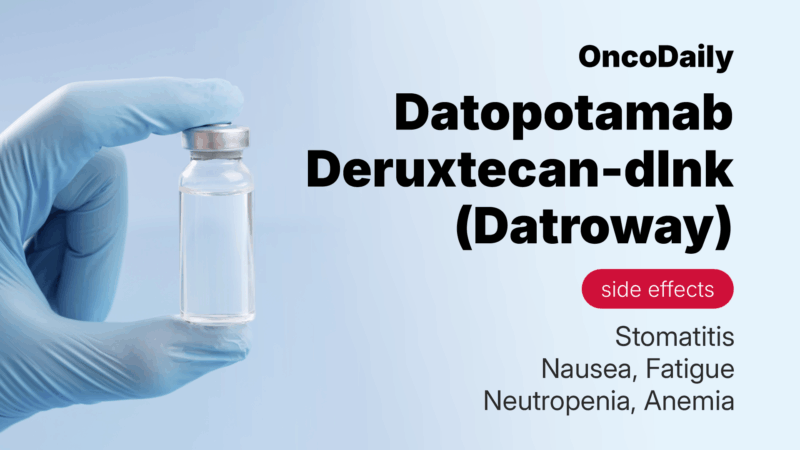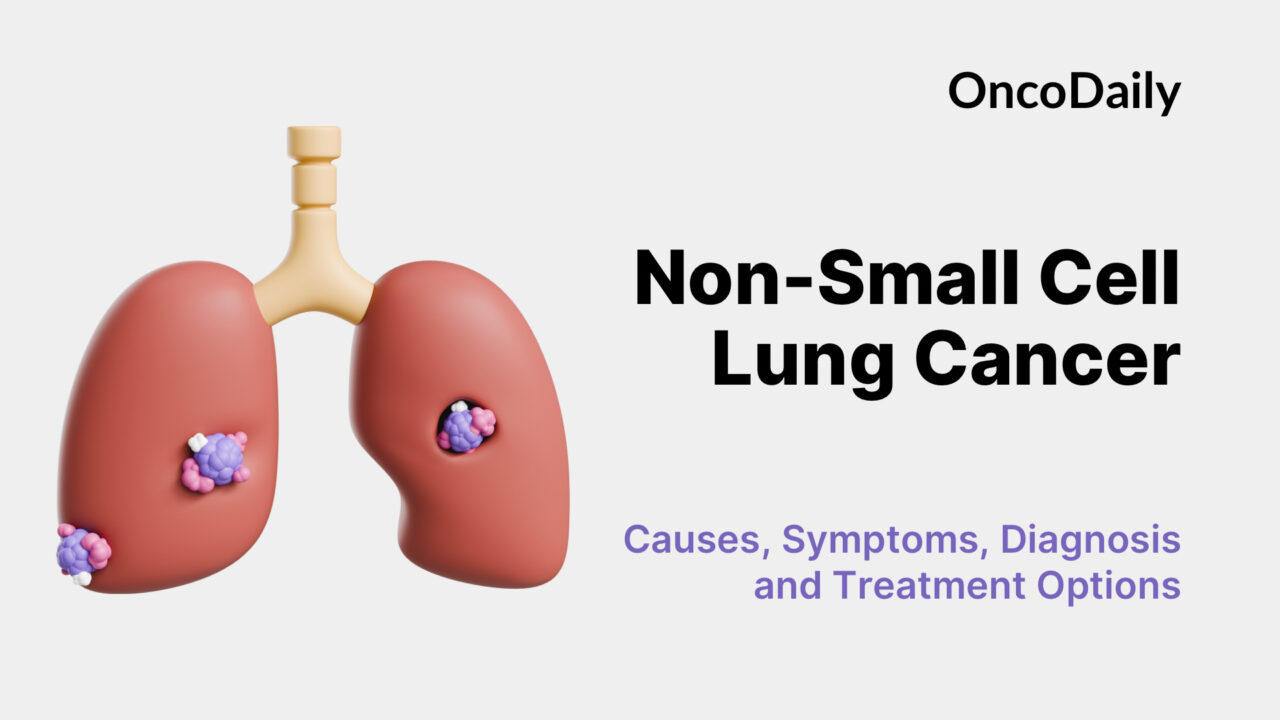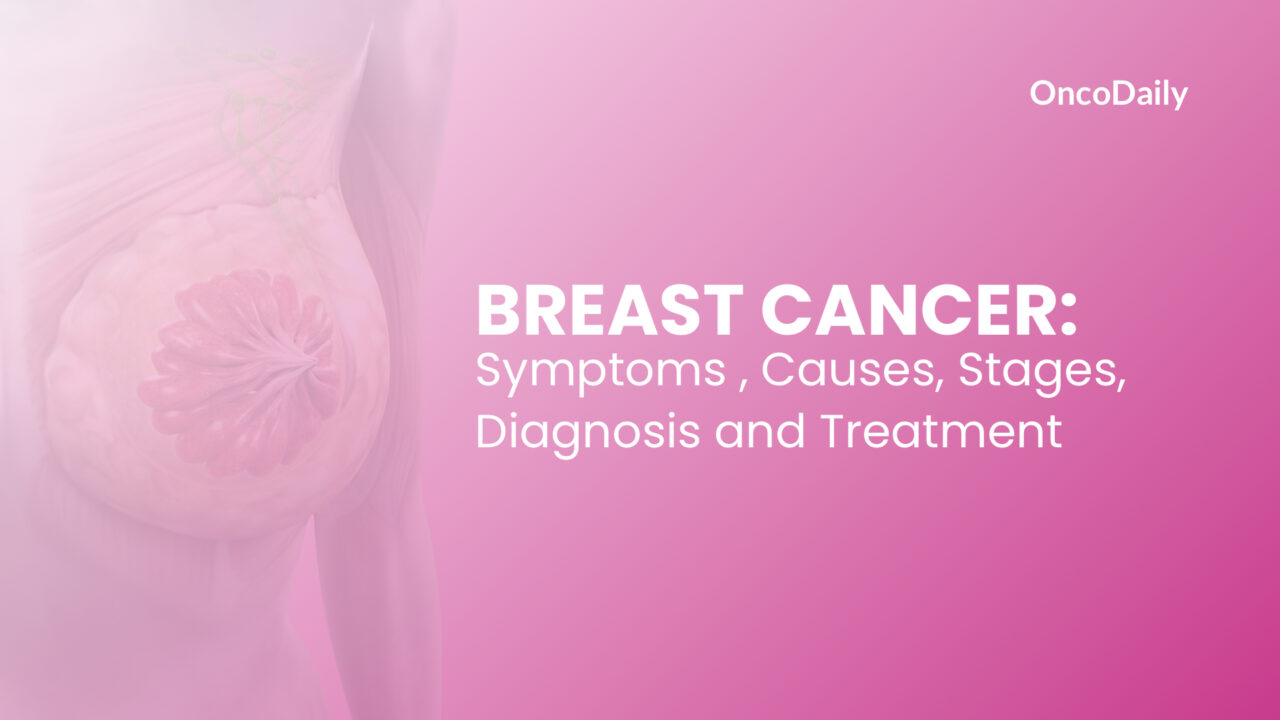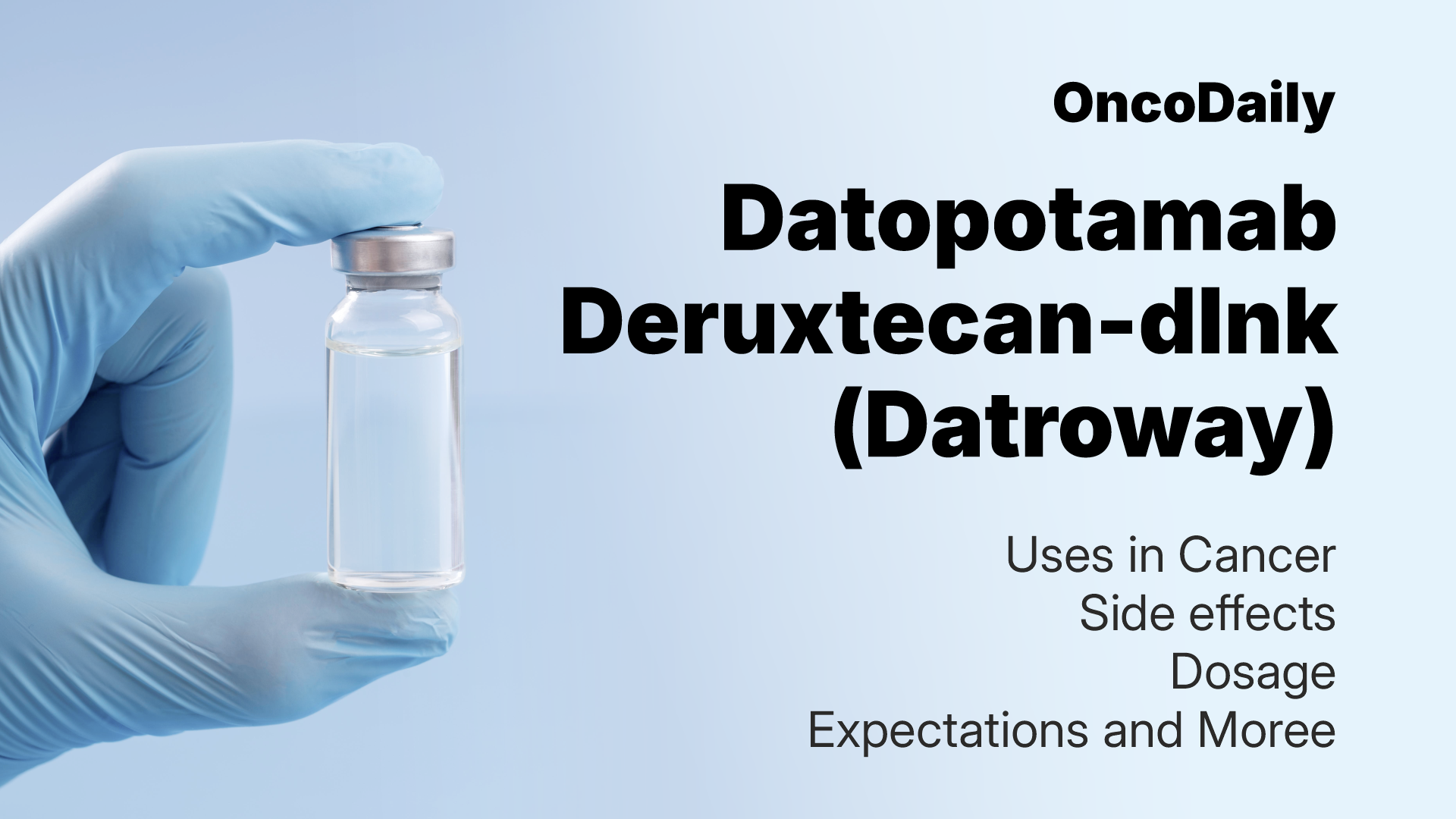Datopotamab deruxtecan-dlnk is an antibody-drug conjugate (ADC) designed to target a protein called Trop-2, which is found on the surface of many cancer cells. By linking a monoclonal antibody to a chemotherapy drug, it delivers treatment directly to tumors while minimizing harm to healthy cells. This article will explore the uses of datopotamab deruxtecan-dlnk in different types of cancer, its potential side effects, recommended dosage, and what patients can expect during treatment.
Which company produced Datopotamab deruxtecan-dlnk?
Datopotamab deruxtecan-dlnk, brand name Datroway, was developed by Daiichi Sankyo—an ADC built on its proprietary DXd platform targeting Trop‑2. In July 2020, Daiichi Sankyo and AstraZeneca entered a global partnership (excluding Japan), under which AstraZeneca paid $1 billion upfront (in staged payments) and may pay up to $5 billion in milestones—potentially a $6 billion deal.
The companies share R&D and commercialization costs and profits equally worldwide (with Daiichi manufacturing), while in Japan Daiichi gets mid‑single‑digit royalties. On U.S. FDA approval for EGFR‑mutated NSCLC in June 2025, AstraZeneca triggered a $45 million milestone payment to Daiichi Sankyo. AstraZeneca leads late‑stage trials and global regulatory filings, aligning with its oncology expertise.
How does Datopotamab deruxtecan-dlnk work?
Datopotamab deruxtecan-dlnk is a type of cancer drug called an antibody-drug conjugate (ADC). It works by combining two powerful tools into one: a monoclonal antibody and a chemotherapy drug.
The antibody part of the drug is designed to find and attach to a specific protein called Trop-2, which is found on the surface of many cancer cells, including those in lung and breast cancer. Once the drug locks onto the Trop-2 protein, it delivers its chemotherapy payload—a topoisomerase I inhibitor—directly into the cancer cell.
Inside the cell, the chemotherapy is released, damaging the cell’s DNA and causing the cancer cell to die. Because this approach targets cancer cells more directly than traditional chemotherapy, it may reduce damage to healthy cells and improve treatment outcomes.
What Cancers Is Datopotamab deruxtecan-dlnk Approved to Treat?
Datopotamab deruxtecan-dlnk is FDA-approved for the treatment of two advanced cancers. In January 2025, the FDA approved it for adults with hormone receptor–positive, HER2-negative unresectable or metastatic breast cancer who had previously received both endocrine therapy and chemotherapy. The approval was based on data showing a clear benefit over standard chemotherapy, with improved progression-free survival and higher response rates.
Then, in June 2025, Datroway received accelerated approval for adults with EGFR-mutated locally advanced or metastatic non–small cell lung cancer (NSCLC) who had already been treated with both EGFR-targeted therapy and platinum-based chemotherapy. This decision was based on promising tumor response rates and durability of effect in a population with limited options.
What research is behind the approval?
Datopotamab deruxtecan-dlnk is a targeted antibody-drug conjugate designed to treat certain advanced cancers. Its approval by the FDA was based on clinical trial data demonstrating meaningful benefits in patients with difficult-to-treat lung and breast cancers. Below is an overview of the key studies that supported its approvals in non-small cell lung cancer and hormone receptor-positive breast cancer.
Datopotamab deruxtecan-dlnk for Breast Cancer
The approval for unresectable or metastatic hormone receptor (HR)-positive, HER2-negative breast cancer is based on the TROPION-Breast01 trial. This was a large, multicenter, randomized study involving 732 patients. Participants were assigned either to datopotamab deruxtecan-dlnk or to chemotherapy chosen by their investigators (options included eribulin, capecitabine, vinorelbine, or gemcitabine).
The trial’s primary outcomes were progression-free survival (PFS) and overall survival (OS). Datopotamab deruxtecan-dlnk significantly extended median PFS to 6.9 months compared to 4.9 months for chemotherapy (hazard ratio 0.63, statistically significant). However, median overall survival was similar between the two groups (18.6 months vs. 18.3 months). The confirmed overall response rate was higher with datopotamab deruxtecan-dlnk at 36%, versus 23% for chemotherapy, and the median duration of response was slightly longer (6.7 months vs. 5.7 months). The complete results appeared in the Journal of Clinical Oncology in September 2024.

Find more information about deruxtecan-dlnk FDA approval for unresectable or metastatic, HR-positive, HER2-negative breast cancer on OncoDaily.
Datopotamab deruxtecan-dlnk for NSCLC
The approval for locally advanced or metastatic EGFR-mutated non-small cell lung cancer (NSCLC) is based on data from two clinical trials: TROPION-Lung05 and TROPION-Lung01.
- TROPION-Lung05 was a multicenter, single-arm trial.
- TROPION-Lung01 was a multicenter, open-label, randomized controlled trial.
Together, these studies evaluated 114 patients with EGFR-mutated NSCLC who had previously been treated with EGFR-targeted therapy and platinum-based chemotherapy. Patients received datopotamab deruxtecan-dlnk at the recommended dose.
The main outcomes were overall response rate (ORR) and duration of response (DOR), assessed by independent review using RECIST criteria. The confirmed ORR was 45%, and the median duration of response was 6.5 months. The drug is given as an intravenous infusion every 3 weeks at a dose of 6 mg/kg (maximum 540 mg for patients weighing 90 kg or more) until disease progression or unacceptable toxicity occurs.
Find more information about Datopotamab Deruxtecan-dlnk’s FDA approval for EGFR-Mutated Non-Small Cell Lung Cancer on OncoDaily.
Datopotamab deruxtecan-dlnk side effects and its management
Datopotamab deruxtecan-dlnk is an antibody-drug conjugate approved for the treatment of certain advanced cancers, including non-small cell lung cancer (NSCLC) and hormone receptor-positive, HER2-negative breast cancer. It targets a protein called Trop-2, delivering chemotherapy directly into cancer cells. While effective, it can cause a range of side effects. Some are common and manageable, while others are less frequent but may require urgent medical attention.
Common Side Effects
Many patients experience mild to moderate side effects during treatment. The most commonly reported include mouth sores (stomatitis), nausea, vomiting, fatigue, constipation, hair thinning or hair loss (alopecia), and dry eyes. Blood-related side effects are also common, including low white blood cells (neutropenia), anemia (low hemoglobin), and decreased lymphocytes. Additionally, some patients show elevated liver enzymes or low calcium levels during routine blood tests.
Stomatitis often appears as painful mouth ulcers. Nausea and vomiting may vary in severity and tend to be worse in the first few days after infusion. Fatigue is commonly reported and may persist throughout the treatment course. Constipation usually improves with hydration and diet changes. Hair loss is not complete for most patients but may be noticeable. Dry eyes and eye discomfort can also develop over time, requiring regular eye care.
Less Common or Serious Side Effects
Less frequent but more serious side effects include interstitial lung disease (ILD) or pneumonitis, which is inflammation in the lungs. This may start as a cough or shortness of breath and can become life-threatening if not managed early. Vision problems or eye pain may occur in a smaller number of patients, sometimes requiring referral to an ophthalmologist. Some patients may develop infusion-related reactions during or shortly after the drug is administered. These reactions may include fever, chills, or difficulty breathing. Severe allergic reactions with swelling or rash are rare but possible.
Blood test abnormalities like severely low neutrophils or platelets may lead to increased risk of infections or bleeding. In rare cases, electrolyte imbalances such as hypocalcemia can cause muscle cramps or tingling. The drug can also harm an unborn baby, so effective birth control is required during treatment and for a time afterward for both men and women. Breastfeeding is not advised during treatment and for at least one month after the last dose.
Management of Side Effects
Mouth sores can be managed with steroid mouthwash and good oral hygiene. Sucking on ice chips during infusion may help. Nausea is usually controlled with anti-nausea medications and eating bland, small meals. Fatigue improves with rest, light activity, and treating underlying causes like anemia.
Constipation can be relieved with more fluids, a high-fiber diet, and laxatives if needed. For dry or irritated eyes, artificial tears are recommended, and contact lenses should be avoided. Eye exams may be needed if symptoms worsen. Blood counts are checked regularly. If they drop too low, the dose may be adjusted or supportive medications may be given. Any signs of infection or bleeding should be reported quickly.
For lung symptoms like cough or breathlessness, treatment may be paused, and steroids started if ILD is suspected. Allergic or infusion-related reactions are treated with medications and by slowing or stopping the infusion. Low calcium is corrected with supplements. Patients must avoid pregnancy, use birth control, and not breastfeed during and shortly after treatment.

What is the Recommended Dosage of Datopotamab deruxtecan-dlnk?
Datopotamab deruxtecan-dlnk is given as an intravenous (IV) infusion using a 100 mg single-use vial of lyophilized powder. It is administered every three weeks at a dose of 6 mg per kilogram of body weight, with a maximum of 540 mg per dose. Treatment continues until the cancer worsens or side effects become unmanageable.
For breast cancer, this medication is approved for adults with unresectable or metastatic, hormone receptor-positive, HER2-negative disease (including HER2-low tumors) who have already received hormone therapy and chemotherapy for advanced disease. In non-small cell lung cancer (NSCLC), it is used in adults with EGFR-mutated, advanced or metastatic tumors who have previously been treated with EGFR-targeted therapy and platinum-based chemotherapy.

Learn more about Non-Small Cell Lung Cancer: Causes, Symptoms, Diagnosis, Treatment Options, and Latest 2025 Advances in Targeted and Immunotherapy on OncoDaily.
How is Datopotamab deruxtecan-dlnk administered?
Datopotamab deruxtecan is given as an intravenous (IV) infusion every three weeks. It must be prepared carefully using sterile water and diluted in a 5% dextrose (D5W) solution. The final mixture is infused through a special filter and protected from light. Saline (sodium chloride) must not be used, and the drug should not be mixed with other medications in the same line.
For the first dose, the infusion takes 90 minutes and patients are monitored for at least an hour afterward for any reactions. If well tolerated, future infusions can be given over 30 minutes, with similar post-infusion monitoring. Before each treatment, patients receive premedications like diphenhydramine and acetaminophen, and sometimes corticosteroids, to help prevent infusion-related side effects. Patients may also be asked to hold ice chips in their mouths during the infusion to reduce the risk of mouth sores.
Any missed or delayed dose should be given as soon as possible, keeping the schedule on a 3-week cycle. Unopened vials must be stored in the refrigerator and protected from light. Once reconstituted or diluted, the drug must be used within 24 hours and should never be frozen.
What to Avoid During Datopotamab deruxtecan-dlnk Treatment?
Pregnancy and breastfeeding are avoided during treatment, as the drug may harm the baby. Effective contraception is used throughout treatment and for several months afterward. Live vaccines are avoided due to the risk of infection, especially when immunity is lowered. Contact with people who are sick is limited for the same reason.
Mixing with saline or other IV drugs in the same line is not done, as it may cause incompatibility. Contact lenses are avoided if eye irritation occurs, and eye drops are used as recommended. Shaking of the vial or infusion bag is avoided during preparation. Missed doses are not skipped but are given as soon as possible to stay on schedule.

Learn more about Breast Cancer: Symptoms Causes, Stages, Diagnosis and Treatment on OncoDaily.
Datopotamab deruxtecan-dlnk effectiveness over time
Datopotamab deruxtecan-dlnk has shown durable responses in advanced breast and lung cancers, even after prior treatments. In hormone receptor-positive, HER2-negative breast cancer, the TROPION-Breast01 trial showed a median progression-free survival of about 13 months, outperforming standard chemotherapy.
In EGFR-mutated non-small cell lung cancer, early responses were seen within months, with many patients staying on treatment for six months to a year or longer without disease progression. While long-term survival data are still emerging, current results suggest the drug offers lasting disease control in selected patients.
Ongoing trials with Datopotamab deruxtecan-dlnk
The TUXEDO-5 trial is a Phase II study testing datopotamab deruxtecan (Dato-DXd) in adults with non-squamous NSCLC and active brain metastases, including those with or without genetic mutations (AGAs). Patients receive Dato-DXd at 6 mg/kg IV every 3 weeks until disease progression or unacceptable side effects. Supportive care includes mouthwash, anti-nausea drugs, and eye drops. The study will enroll 20 patients, aiming to evaluate how effectively the drug shrinks or controls brain tumors. After treatment, patients are followed every 3 months to monitor survival and further therapies.
The TROPION-Lung14 trial is a global Phase III study evaluating whether adding datopotamab deruxtecan (Dato-DXd) to osimertinib improves outcomes in patients with locally advanced or metastatic EGFR-mutant non-small cell lung cancer (NSCLC) who haven’t received prior treatment. Patients are randomly assigned to receive either osimertinib alone or in combination with Dato-DXd. Treatment continues until disease progression or side effects become unmanageable. The study will track outcomes over several years, with regular assessments every 3 weeks during treatment. The goal is to determine if the combination offers better disease control than osimertinib alone.
FAQ
What types of cancer is Datroway approved to treat?
As of 2025, it is FDA-approved for advanced hormone receptor-positive, HER2-negative breast cancer and EGFR-mutated NSCLC, both after prior standard therapies.
How does Datopotamab Deruxtecan-dlnk work?
It is a Trop-2–directed antibody-drug conjugate. It attaches to Trop-2 proteins on cancer cells and releases a chemotherapy drug (DXd) inside the cells, destroying them from within while minimizing damage to healthy tissue.
What are the common side effects of Datroway?
Patients often experience nausea, fatigue, mouth sores, low blood counts, hair loss, constipation, and dry eyes. Serious risks include interstitial lung disease (ILD) and infusion-related reactions.
How is Datroway given?
It is given as an intravenous (IV) infusion once every 3 weeks, at a dose of 6 mg per kilogram of body weight (maximum 540 mg per cycle).
How is Datopotamab Deruxtecan metabolized?
Once inside the cancer cell, Datroway is broken down by lysosomal enzymes, releasing its payload, DXd. The antibody portion is catabolized into peptides and amino acids like natural antibodies. DXd is mainly metabolized by the liver enzyme CYP3A4.
How is Datopotamab Deruxtecan eliminated from the body?
The drug is cleared at an estimated rate of 0.6 liters per day. Both Datroway and DXd clear faster in patients with higher body weight. The median half-life of the main drug is 4.8 days, and the DXd payload has a median half-life of about 5.5 days.
